
Newsletter
October 2020
UPCOMING EVENTS
Enjoy these Free Virtual Panels & Programs
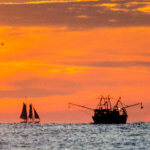 October 21 | 12-1 p.m.
October 21 | 12-1 p.m.
UCI Marine & Environmental Speaker Series
 October 23 | 12-1:30 p.m.
October 23 | 12-1:30 p.m.
Green Infrastructure and New Jersey Stormwater Management
Presented in partnership with Clean Ocean Action, the Deal Lake Watershed Alliance, the Jersey Shore Group – NJ Chapter of the Sierra Club, Long Branch Green Team, and Whale Pond Brook Watershed Association
 October 26 | 3:15-4 p.m.
October 26 | 3:15-4 p.m.
Impact of Climate Change-Driven Sea Level Rise on Coastal Communities
With UCI Associate Director Thomas Herrington. Presented as part of the Monmouth University ‘Wake Up to Climate Change’ Climate Crisis Teach-In series
 October 27 | 10:30-11:15 a.m.
October 27 | 10:30-11:15 a.m.
With UCI Director Tony MacDonald and Student Research Assistant Johanna Vonderhorst. Presented as part of the Monmouth University ‘Wake Up to Climate Change’ Climate Crisis Teach-In series
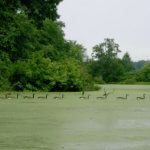 October 27 | 6-7 p.m.
October 27 | 6-7 p.m.
Harmful Algal Blooms and Other ‘Nasties’ in our Coastal Waters
With Endowed Associate Professor of Marine Science Jason Adolf and student panelists Aidan Bodeo-Lomicky, Hannah Craft and Skyler Post. Presented as part of the Monmouth University ‘Wake Up to Climate Change’ Climate Crisis Teach-In series
 October 30 | 1:30-2:25 p.m.
October 30 | 1:30-2:25 p.m.
‘Climate Change & the Voiceless’ Student Panel
Moderated by Rechnitz Family/UCI Endowed Chair in Marine and Environmental Law and Policy Randall Abate with panelists Daniel Conte, Michelle Etienne, Anastasia Francisquini, London Jones and Arione Santiago. Presented as part of the Monmouth University ‘Wake Up to Climate Change’ Climate Crisis Teach-In series
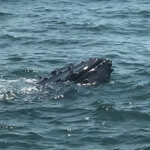
November 5 | 1-2 p.m.
Life in the Deep Sea: Canyons as Whale Habitat
Presented by the Mid-Atlantic Regional Council on the Ocean
 November 10 | 12-1 p.m.
November 10 | 12-1 p.m.
‘Is Seaweed a Fish?’ with Ethan Prall
UCI Marine & Environmental Speaker Series
 November 18 | 1:15-2:15 p.m.
November 18 | 1:15-2:15 p.m.
The Interface Between Marine Biology and Creative Microscopic Inhabitants of the Sea
Monmouth University Department of History & Anthropology Research and Teaching Pedagogy Seminar Series featuring the artwork of Professor Pat Cresson
Student Papers Examine Discriminatory Barriers to Beach Access, Climate Threats to Right Whales
With grant support from the Urban Coast Institute’s (UCI) Heidi Lynn Sculthorpe Scholars Program, Monmouth University students London Jones and Aidan Bodeo-Lomicky conducted research on two timely topics: Discriminatory barriers to beach access in New Jersey and threats to the critically endangered North Atlantic right whale. Rechnitz Family/UCI Endowed Chair in Marine and Environmental Law and Policy Randall Abate served as the faculty mentor on the work.
We caught up with London and Aidan recently to ask a few questions about their research. Read what they had to say and download copies of their papers below.
Paper Title: Free, but for a Fee: Addressing Racially Discriminatory Burdens on New Jersey Beaches, One Beach Tag at a Time
 Student Researcher: London Jones
Student Researcher: London Jones
Year and Major: Senior, Communication
Q: Your research focused on Asbury Park, Belmar and Cape May as case studies. What was your reasoning for selecting those three towns?
My reasoning behind the selection of Asbury Park, Belmar, and Cape May was that I aimed for difference in coastal location, town history, population, and racial composition so that my case studies could encapsulate all types of New Jersey beach towns. I want my proposal to be adopted statewide, so it was pertinent for me not to only focus on towns in a certain category, like those in South Jersey or those with only wealthy residents. Rather, I selected a diverse mix of towns to highlight the common flaw they share despite their differences: the beach tag.
Q: While Jersey Shore visitors generally regard the beach tag as a hassle, it is seldom discussed from the standpoint of imposing racially discriminatory burdens. How does the practice of requiring them impose an unfair burden on Black beachgoers?
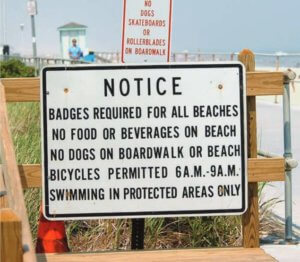 As described in my paper, the practice of requiring beach tags imposes a disproportionate burden on Black beachgoers in cost, access, and how beach tag revenues are spent. Historically, beach tags were imposed as a way of keeping nonresidents off the beaches of certain towns, which had populations majorly consisting of white communities. Although rights for public access along New Jersey beaches have been secured, the constant increases in beach tag prices and caps on numbers of tags sold restricts access for low income communities and those who do not reside in the beach towns, which is primarily the Black community. Additionally, beach tag revenues are then spent on frivolous beach amenities rather than necessary spending to make those shorelines safer and more accessible to those who either visit after hours or forego attending the beach all together to avoid the need for beach tags.
As described in my paper, the practice of requiring beach tags imposes a disproportionate burden on Black beachgoers in cost, access, and how beach tag revenues are spent. Historically, beach tags were imposed as a way of keeping nonresidents off the beaches of certain towns, which had populations majorly consisting of white communities. Although rights for public access along New Jersey beaches have been secured, the constant increases in beach tag prices and caps on numbers of tags sold restricts access for low income communities and those who do not reside in the beach towns, which is primarily the Black community. Additionally, beach tag revenues are then spent on frivolous beach amenities rather than necessary spending to make those shorelines safer and more accessible to those who either visit after hours or forego attending the beach all together to avoid the need for beach tags.
Q: Do you believe there were discriminatory motives behind the beach access barriers discussed in your paper or are they policies that carry that unintended consequence?
As underscored by the Black Lives Matter movement, many majority communities do not always have the best interests of the Black community in mind. While many past instances of discrimination on the Jersey shore, as described in my paper, have been motivated by discriminatory intent, I do not believe that the current beach access barriers have been imposed due to discriminatory motives. Rather, these barriers cause unintended consequences to the Black communities, placing unfortunate burdens on their lives when attending their favorite shore towns. Nonetheless, any impact to the Black community, purposeful or not, should be addressed with urgency and sensitivity.
 Student Researcher: Aidan Bodeo-Lomicky
Student Researcher: Aidan Bodeo-Lomicky
Year and Major: Junior; Major: Marine and Environmental Biology and Policy; Minor: Political Science
Q: Scientists estimate there are only about 400 North Atlantic right whales left in the wild. What are some of the ways that climate change is exacerbating the threat to them?
Climate change is warming the waters off New England faster than any other region on the planet, which is having severe impacts on this aquatic ecosystem. The primary food source for the North Atlantic right whale is a subarctic zooplankton called Calanus finmarchicus, and these copepods must migrate to colder, deeper waters to survive this warming. Naturally, the whales must follow their food, and as they do so, they enter new regions without the same protections against ship strikes and fishing gear entanglement. Since 2017, 10% of the entire North Atlantic right whale population has been killed or severely injured, with most of these incidents occurring in new habitats that have not historically warranted conservation measures for this species but now do as a result of climate change. Furthermore, as the whales must travel greater distances to feed, they expend valuable energy and time, which lowers their overall health and reproductive success. Climate change has rapidly thrown this entire region out of balance, and now it is up to managers to quickly adapt in an effective way.
Q: The issues of right whales suffering from ship strikes and entanglements with fishing gear have attracted a lot of attention from scientists and the public. Did you find that the threats from climate change have been adequately studied to date?
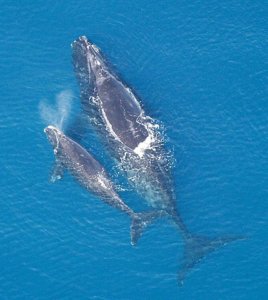 It certainly never hurts to learn more about the threats to a critically endangered species, especially when they involve an issue as dynamic and far-reaching as climate change. However, the science is already quite clear and the North Atlantic right whale simply does not have any time to waste. Immediate actions must be taken to protect this incredible species, or it will be lost forever. Once these actions are taken, more time and money can be put towards gaining further insight into how climate change is affecting the region so that future adaptation methods can be more effective.
It certainly never hurts to learn more about the threats to a critically endangered species, especially when they involve an issue as dynamic and far-reaching as climate change. However, the science is already quite clear and the North Atlantic right whale simply does not have any time to waste. Immediate actions must be taken to protect this incredible species, or it will be lost forever. Once these actions are taken, more time and money can be put towards gaining further insight into how climate change is affecting the region so that future adaptation methods can be more effective.
Q: You propose a series of short- and long-term measures to protect right whales, including expanded speed restrictions in their habitat areas and mandates for the use of ropeless gear for some fisheries. If enacted, what kind of difference would you expect to see in their populations?
Removing the fast-moving vessels and dangerous fishing ropes from the areas where right whales are (or will soon be) found will have immediate positive impacts on the population. Just this summer, a 1-year-old right whale was killed by a ship strike in Elberon, New Jersey, a few minutes away from Monmouth University’s campus. If vessel speed reductions had been extended later into the summer here, this calf would still be swimming alongside his mother. Similarly, fishing gear presents both lethal and sublethal threats to whales, including the reproductive success of mature females, so removing the ropes will create benefits that go even beyond this generation of whales. Ropeless fishing gear is already being developed and implemented in other regions, so it is simply a matter of having the political and economic will to implement it in New England.
Watch: Monmouth Researchers Explore Revolutionary War Shipwrecks from the Sky
Monmouth University students and researchers recently returned to Crosswicks Creek in Bordentown, New Jersey, where two ships destroyed in the Revolutionary War were found over the winter (read story in Monmouth magazine). The team is now gathering aerial drone footage as part of a project to create 3D models of the remains. Learn more in this video featuring interviews with Monmouth GIS Program Program Director Geoff Fouad, student researcher Bre DiRenzi, and Urban Coast Institute Field Operations Assistant Mitch Mickley.
Jersey Shore Wave-Monitoring Buoy Deployed from R/V Heidi Lynn Sculthorpe
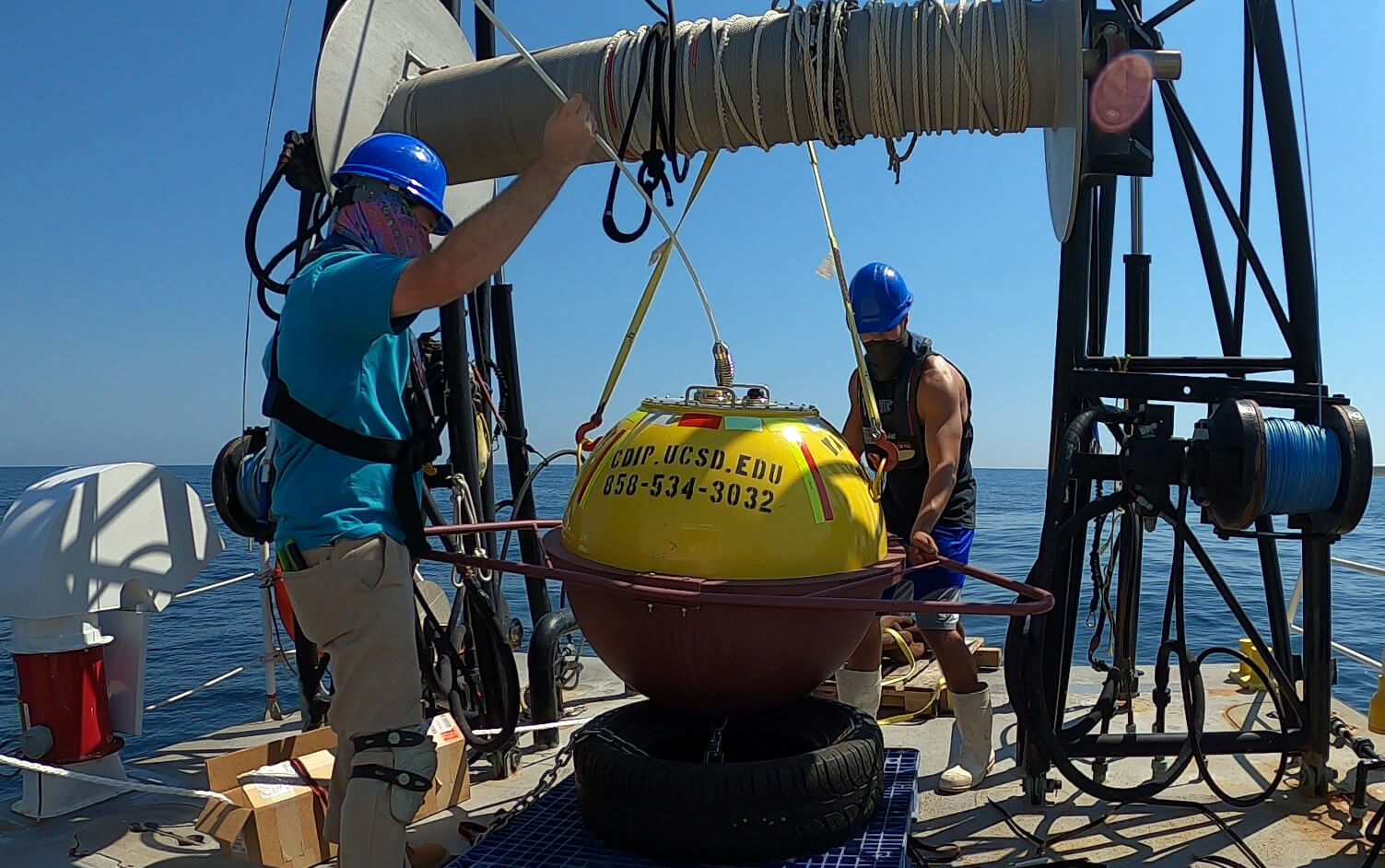
A buoy programmed to transmit real-time data on waves and temperatures at sea was recently deployed about 13 miles east of Barnegat Bay from Monmouth University’s R/V Heidi Lynn Sculthorpe.
The buoy joined a national network of stations operated by the Coastal Data Information Program (CDIP), based at the Scripps Institution of Oceanography, to provide coastal engineers and planners, scientists, mariners and the public with a wealth of data that can inform their research and decision-making. Among the parameters being measured are average wave heights, the distance between waves and the direction of their movement. A live feed sharing data from the buoy is now available on the CDIP website.
The buoy’s location fills an important gap for researchers, according to UCI Associate Director Thomas Herrington. The nearest stations of its kind, all maintained by the National Oceanic and Atmospheric Administration, are located off Long Island, at the entrance to New York Harbor and offshore of the Delaware Bay.
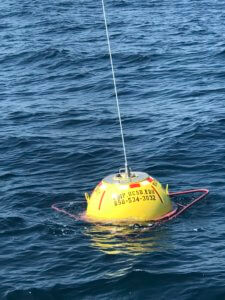 “The Jersey Shore sees very different wave fields than, say, North Carolina or even Delaware because Long Island Sound, Long Island itself and New England act as a natural breakwater for waves coming from the northeast,” Herrington said. “So the wave climate we have off New York Harbor is very different than the wave climate we have off Cape May. This buoy is really important to understanding what’s going on off our coast.”
“The Jersey Shore sees very different wave fields than, say, North Carolina or even Delaware because Long Island Sound, Long Island itself and New England act as a natural breakwater for waves coming from the northeast,” Herrington said. “So the wave climate we have off New York Harbor is very different than the wave climate we have off Cape May. This buoy is really important to understanding what’s going on off our coast.”
UCI Marine Scientist Jim Nickels, Field Operations Assistant Mitchell Mickley and Monmouth University student Bryce McCall placed the buoy and its 1,100-pound anchor just inside the southern reach of the zone that separates the Barnegat-Ambrose shipping lanes, among the busiest maritime corridors in the country. It was a job the Heidi Lynn Sculthorpe was born to do – the vessel was originally built as a U.S. Coast Guard buoy tender.
Funding for the deployment came from Scripps through the Army Corps of Engineers, which relies on the CDIP data to evaluate the performance of coastal projects ranging from beach replenishment to the dredging of channels.
The Mid-Atlantic Regional Association Coastal Ocean Observing System (MARACOOS) is studying the data as part of an effort to more accurately model wave heights in the region. Depending on wind direction the waves near the coast can be drastically different from waves reported by NOAA buoys which are located farther offshore. The CDIP buoy provides a nearshore wave measurement to validate the high frequency radar-derived wave heights. MARACOOS also provides a free and publicly accessible feed from the buoy on its portal OceansMap.
Gaffney Named to National Academies Committee Tasked with Advancing Defense Research at HBCUs and MSIs
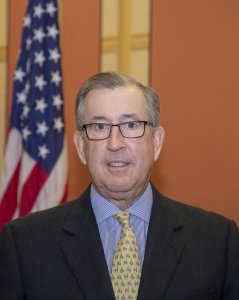 Monmouth University President Emeritus and Urban Coast Institute Ocean Policy Fellow Paul G. Gaffney II has been appointed as a member of the National Academies of Sciences, Engineering and Medicine’s Committee on Defense Research at Historically Black Colleges and Universities (HBCU) and other Minority Serving Institutions (MSI).
Monmouth University President Emeritus and Urban Coast Institute Ocean Policy Fellow Paul G. Gaffney II has been appointed as a member of the National Academies of Sciences, Engineering and Medicine’s Committee on Defense Research at Historically Black Colleges and Universities (HBCU) and other Minority Serving Institutions (MSI).
The committee was formed to examine the status of defense research at HBCUs and MSIs and the methods and means necessary to advance research capacity at those institutions to address national security and defense needs. Gaffney’s term will extend through March of 2022.
“I am honored to have been selected to participate in this important and timely study,” said Gaffney, who served as Monmouth University’s president for a decade.
Gaffney is a retired U.S. Navy vice admiral and a former president of the National Defense University. While in the Navy he also served as chief of naval research and commander of naval meteorology and oceanography. He was appointed as a commissioner with the U.S. Commission on Ocean Policy and served during its full term. The National Academy of Engineering selected him as a member in 2010.
The new committee will examine:
- The degree to which MSIs and other covered institutions are successful in competing for and executing Department of Defense (DOD) contracts and grants for research.
- Promising practices for advancing the capacity of covered institutions to compete for and conduct research programs related to national security and defense, including incentives to attract, recruit and retain leading research faculty.
- The effectiveness of DOD in attracting and retaining students specializing in science, technology, engineering, and mathematics fields from covered institutions for its programs on emerging capabilities and technologies.
The committee will produce a final report that includes its findings and recommendations. The body will serve under the oversight of the National Academies Board on Higher Education and Workforce (BHEW).
Watch: Stormwater Pollution and Local Watersheds Webinar
The Sept. 14 “Stormwater Pollution and Local Watersheds” webinar focused on steps residents and municipalities can take to combat runoff pollution and flooding, as well as current research on the links between stormwater and problems such as harmful algal blooms and high bacteria counts in Monmouth County’s coastal lakes and surfing beaches.
The event was hosted by the Whale Pond Brook Watershed Association, Clean Ocean Action, the Long Branch Green Team, the Monmouth University Urban Coast Institute, and the Jersey Shore Group – New Jersey Chapter of the Sierra Club. The discussion was moderated by Mary Reilly of the Jersey Shore Group – New Jersey Chapter of the Sierra Club. Panelists and slides are below.
- Sophie Glovier, municipal policy specialist, the Watershed Institute – Slides (29 MB)
- Jason Adolf, endowed associate professor in marine science, Monmouth University – Slides (15 MB)
Antacids for the Sea: Ocean Alkalinization Enhancement in Combating Climate Change
The Monmouth University Institute for Global Understanding (IGU) and Urban Coast Institute kicked off their 2020 Global Ocean Governance Lecture Series on Oct. 12 with Dr. Wil Burns, co-executive director of the Institute for Carbon Removal Law and Policy at American University. Burns delivered a lecture titled, “Antacids for the Sea: The Potential Role of Ocean Alkalinization Enhancement in Combating Climate Change.” Click here to download slides (PDF, 2 MB) or here for information about additional lectures in the series.
Mid-Atlantic Port Access and Navigation Safety Studies Webinar
The Mid-Atlantic Committee on the Ocean (MACO) held a public webinar on Oct. 8 featuring discussion from U.S. Coast Guard representatives about port access and navigation safety studies that the agency is leading along the Atlantic Coast as offshore wind development proceeds. The webinar includes a panel discussion with representatives of the port and maritime industries moderated by Urban Coast Institute (UCI) Director Tony MacDonald as well as a Mid-Atlantic Ocean Data Portal demonstration by UCI Communications Director Karl Vilacoba.
Callas Sculpture Garners First Place Award
 Congratulations to Urban Coast Institute Artist-in-Residence Kimberly Callas, whose “Transcendence Through Ritual” took first place in the sculpture category at the Catharine Lorillard Wolfe Art Club 2020 1st Associates/Non-Members Online Show, held in October. Founded in 1896, CLWAC is a national organization dedicated to promoting works by professional women artists.
Congratulations to Urban Coast Institute Artist-in-Residence Kimberly Callas, whose “Transcendence Through Ritual” took first place in the sculpture category at the Catharine Lorillard Wolfe Art Club 2020 1st Associates/Non-Members Online Show, held in October. Founded in 1896, CLWAC is a national organization dedicated to promoting works by professional women artists.
